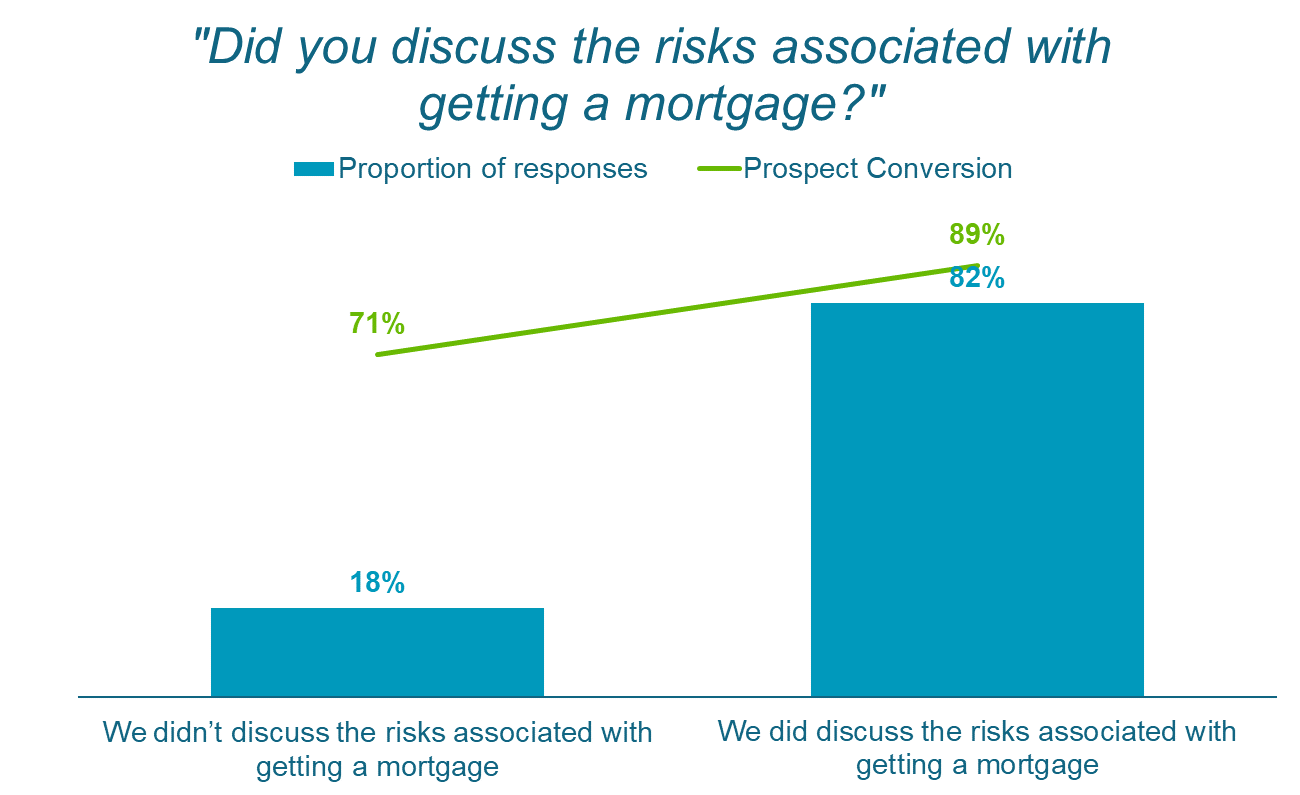Discussion Of Risk
Discussion Of Risk is a Driver of Elevation Goal 1: Making great first impressions, increasing conversion
Data based on responses to the following question, asked in the First Impression review form
"Did you discuss the risks associated with getting a mortgage?"
Possible responses
We didn’t discuss the risks associated with getting a mortgage
They asked me questions to assess whether the mortgage is affordable with my current income and expenses
As well as assessing whether the mortgage is affordable with my current income and expenses, they also asked me to consider whether the mortgage would be affordable if my situation changed
Discussion Of Risk Score
Proportion of respondents answering “They asked me questions to assess whether the mortgage is affordable with my current income and expenses” or “As well as assessing whether the mortgage is affordable with my current income and expenses, they also asked me to consider whether the mortgage would be affordable if my situation changed”
Relationship between Discussion Of Risk and Conversion Rate
The relationship between Discussion Of Risk and Conversion Rate is statistically significant
Why do we ask about Discussion Of Risk?
Our qualitative research with firm management teams, advisers and clients indicated that discussion of risks builds trust with the client and as a result drives conversion.
We confirmed this relationship quantitatively through our review forms.
How to improve your score:
Relate explanations to your client’s circumstance
When explaining risks, relate them to the client’s own circumstances, using elements from their lives to illustrate the situation.
“Could you still afford your mortgage payments if the micro-brewery closed, and Mark lost his job?”
“What would you do if interest rates went up much more than Jane’s pay rises from the local council?”
No-one thinks that bad things are going to happen to them. The best way to get your client to fully engage is to make them visualise the situation happening to them.
Paint pictures
The clearer the picture in the client’s mind, the more they’ll engage with the situation so focus on relatable details to their lives. As well as including elements from their own lives, use descriptive language to help the visualisation.
“Imagine for a second that a letter comes through your letterbox in a brown envelope. You open it to see that the second paragraph says your mortgage payment is going to increase by £200pm. How would you feel?"
“If you were ill for several months, and couldn’t go to work at the solicitors, could you still afford Emilia’s horse-riding lessons and your mortgage payments?"
“If you did decide to have another baby, giving Jack a little brother or sister, how would this affect your finances? Could you still afford to pay your mortgage taking the additional nursery fees into account?”
By getting your client to imagine a situation happening to them, you’ll get a stronger emotional reaction. This will make them really think about their situation before committing and will make them much more engaged in the process.
Validate understanding
Test your client’s understanding. Regularly asking a client questions on the subject you’ve just discussed. Ensure you do this from the start of each meeting; that way your client will think more tests will be coming so will really listen and therefore retain more information.
Explain back. Have your client’s explain complex topics back to you to confirm they have fully understood.
Understanding the risks involved with taking a mortgage is incredibly important. No-one likes talking about bad things happening, however, by ensuring your clients understand risk, you are helping them make effective, informed decisions.

